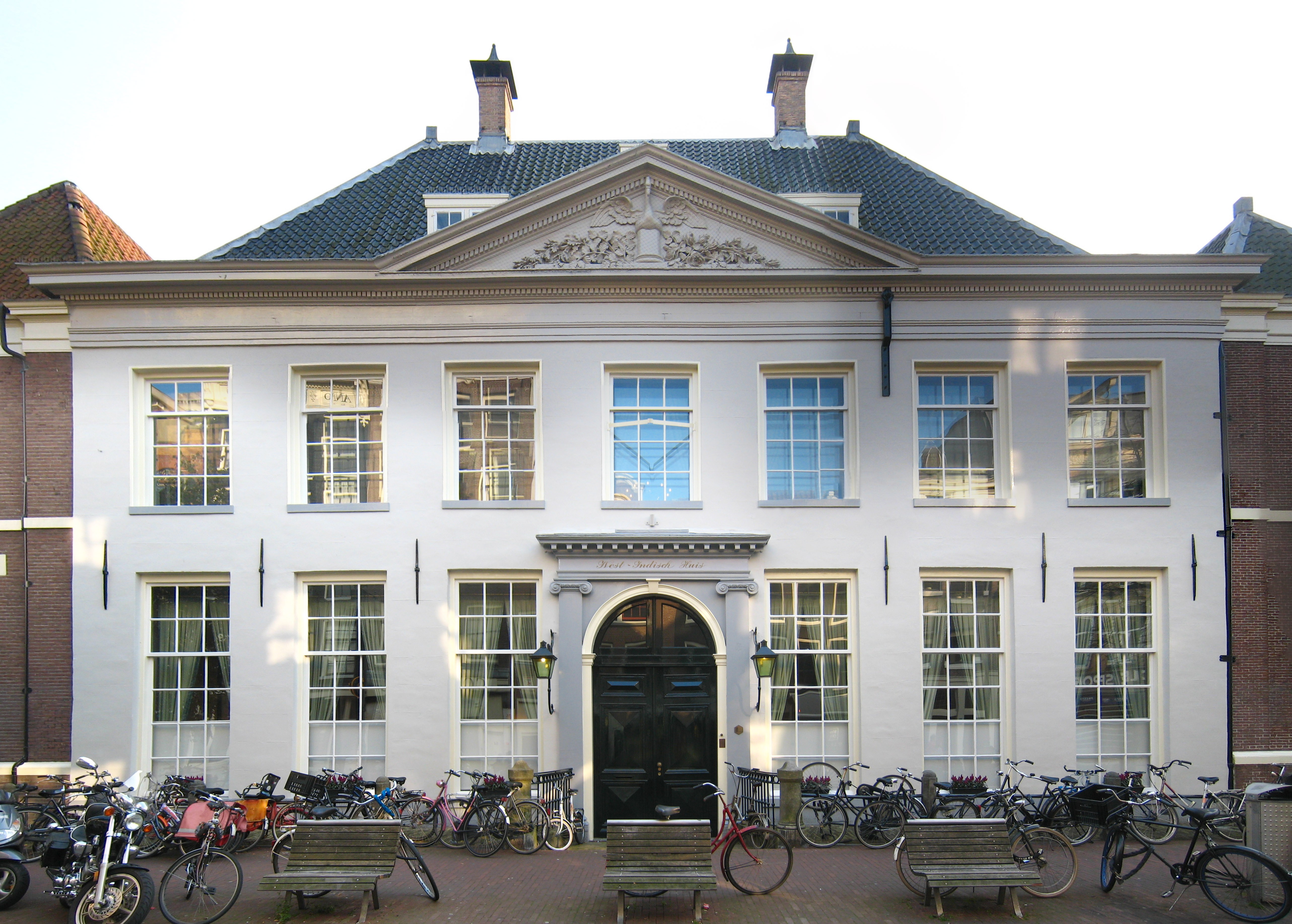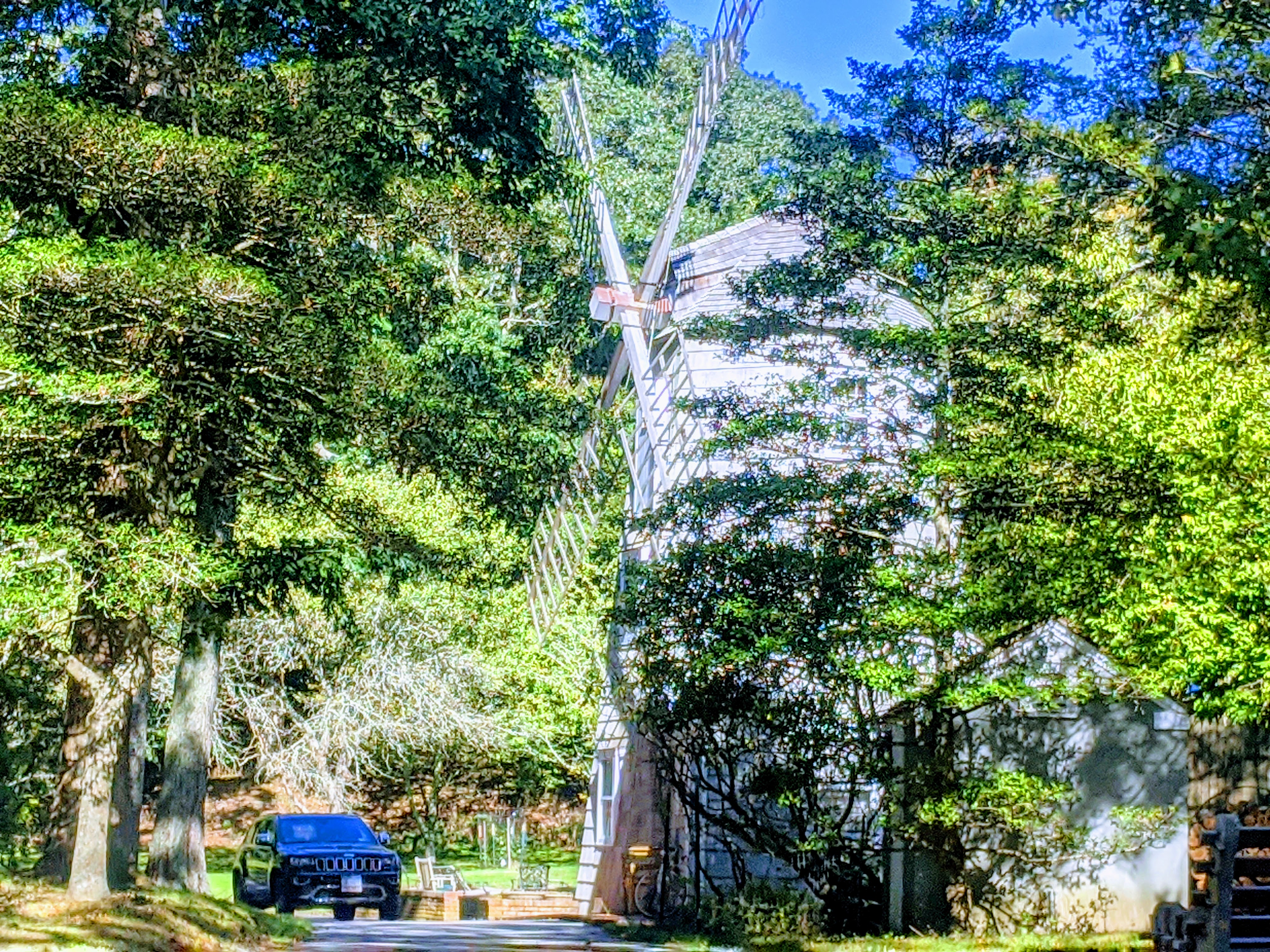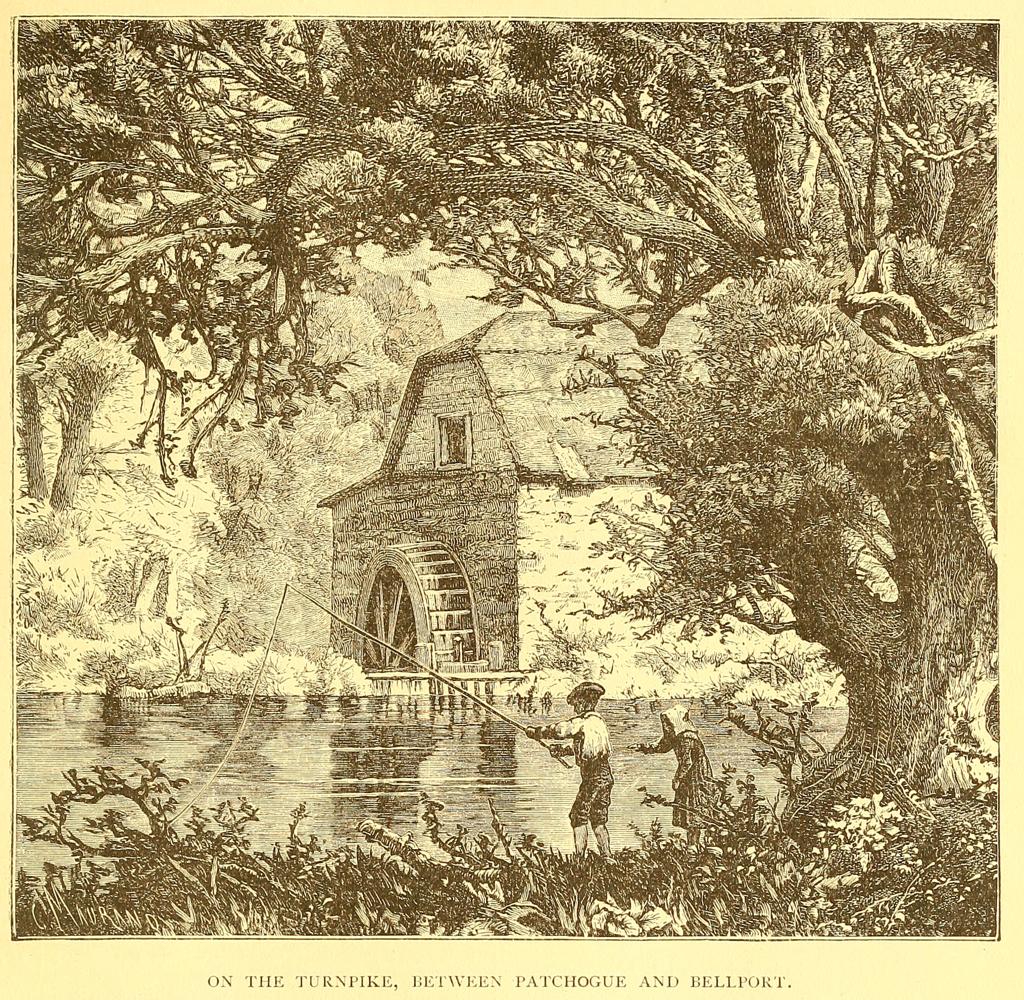|
Saw-kill Mill
The Sawkill mill was a sawmill and slave quarters established by the Dutch West India Company in 1626, as part of the construction of New Netherland, a colonial province in North America. The mill was located at the mouth of the Sawkill, a stream that originated in what is now Central Park in New York City, and flowed into the East River. The slaves, who were mostly men, cut wood for the new colony and Log driving, floated the logs which were guided by boat to New Amsterdam, the capital of New Netherland. The mill and the slave quarters are depicted on The Manatus map of 1639, the oldest map of Manhattan Island, which shows the Saw-Kill as a slave settlement of the Dutch West India Company, not as a mill site. This implies that by 1639, the Saw-Kill mill had reduced its wood-cutting activities. History The Sawkill, Saw-Kill or Colondonck's kill (the Dutch place-name for Saw Mill Creek) was the largest hydrological network on Manhattan island in New York City before the Dutch colo ... [...More Info...] [...Related Items...] OR: [Wikipedia] [Google] [Baidu] |
Dutch West India Company
The Dutch West India Company ( nl, Geoctrooieerde Westindische Compagnie, ''WIC'' or ''GWC''; ; en, Chartered West India Company) was a chartered company of Dutch merchants as well as foreign investors. Among its founders was Willem Usselincx (1567–1647) and Jessé de Forest (1576–1624). On 3 June 1621, it was granted a charter for a trade monopoly in the Dutch West Indies by the Republic of the Seven United Netherlands and given jurisdiction over Dutch participation in the Atlantic slave trade, Brazil, the Caribbean, and North America. The area where the company could operate consisted of West Africa (between the Tropic of Cancer and the Cape of Good Hope) and the Americas, which included the Pacific Ocean and the eastern part of New Guinea. The intended purpose of the charter was to eliminate competition, particularly Spanish or Portuguese, between the various trading posts established by the merchants. The company became instrumental in the largely ephemeral Du ... [...More Info...] [...Related Items...] OR: [Wikipedia] [Google] [Baidu] |
Governors Island
Governors Island is a island in New York Harbor, within the New York City borough of Manhattan. It is located approximately south of Manhattan Island, and is separated from Brooklyn to the east by the Buttermilk Channel. The National Park Service administers a small portion of the north end of the island as the Governors Island National Monument, including two former military fortifications named Fort Jay and Castle Williams. The Trust for Governors Island operates the remaining , including 52 historic buildings, as a public park. About of the land area is fill, added in the early 1900s to the south of the original island. The native Lenape originally referred to Governors Island as Paggank ("nut island") because of the area's rich collection of chestnut, hickory, and oak trees; it is believed that this space was originally used for seasonal foraging and hunting. The name was translated into the Dutch Noten Eylandt, then Anglicized into Nutten Island, before being ren ... [...More Info...] [...Related Items...] OR: [Wikipedia] [Google] [Baidu] |
History Of Slavery In New York (state)
The enslavement of African people in the United States continued in New York as part of the Dutch slave trade. The Dutch West India Company imported eleven African slaves to New Amsterdam in 1626, with the first slave auction held in New Amsterdam in 1655. With the second-highest proportion of any city in the colonies (after Charleston, South Carolina), more than 42% of New York City households held slaves by 1703, often as domestic servants and laborers. Others worked as artisans or in shipping and various trades in the city. Slaves were also used in farming on Long Island and in the Hudson Valley, as well as the Mohawk Valley region. During the American Revolutionary War, the British troops occupied New York City in 1776. The Philipsburg Proclamation promised freedom to slaves who left rebel masters, and thousands moved to the city for refuge with the British. By 1780, 10,000 black people lived in New York. Many were slaves who had escaped from their slaveholders in both Nort ... [...More Info...] [...Related Items...] OR: [Wikipedia] [Google] [Baidu] |
17th Century In The Province Of New York
17 (seventeen) is the natural number following 16 and preceding 18. It is a prime number. Seventeen is the sum of the first four prime numbers. In mathematics 17 is the seventh prime number, which makes seventeen the fourth super-prime, as seven is itself prime. The next prime is 19, with which it forms a twin prime. It is a cousin prime with 13 and a sexy prime with 11 and 23. It is an emirp, and more specifically a permutable prime with 71, both of which are also supersingular primes. Seventeen is the sixth Mersenne prime exponent, yielding 131,071. Seventeen is the only prime number which is the sum of four consecutive primes: 2, 3, 5, 7. Any other four consecutive primes summed would always produce an even number, thereby divisible by 2 and so not prime. Seventeen can be written in the form x^y + y^x and x^y - y^x, and, as such, it is a Leyland prime and Leyland prime of the second kind: :17=2^+3^=3^-4^. 17 is one of seven lucky numbers of Euler whi ... [...More Info...] [...Related Items...] OR: [Wikipedia] [Google] [Baidu] |
List Of Windmills In New York
This is a list of windmills in the American state of New York. Locations Known building dates are in bold text. Non-bold text denotes first known date. Iron windpumps are on this list and noted if listed on the National Register of Historic Places. References Sources * {{New York * New York New York most commonly refers to: * New York City, the most populous city in the United States, located in the state of New York * New York (state), a state in the northeastern United States New York may also refer to: Film and television * '' ... Windmills ... [...More Info...] [...Related Items...] OR: [Wikipedia] [Google] [Baidu] |
List Of Tide Mills On Long Island
This list of Long Islands watermills comprises a selection of European watermills spanning the period from the Dutch colony of Neiuw Amsterdam to the English settlement of the North fork, from 1640 to 1900 AD. A tide mill is a water mill driven by Tide, tidal rise and fall. A dam with a sluice is created across a suitable tidal inlet, or a section of river estuary is made into a Reservoir (water), reservoir. As the tide comes in, it enters the mill pond through a one-way gate, and this gate closes automatically when the tide begins to fall. When the tide is low enough, the stored water can be released to turn a water wheel. Tide mills are usually situated in river estuaries, away from the effects of waves but close enough to the sea to have a reasonable tidal range. Cultures that built such mills have existed since the Middle Ages, and some may date back to the Roman period.Roger, H., Charlier., Marie, Claire, P., Chaineux., Selim, A., Morcos. (2004). Panorama of the History ... [...More Info...] [...Related Items...] OR: [Wikipedia] [Google] [Baidu] |
Frederick Ambrose Clark
Frederick Ambrose Clark (August 1, 1880 – February 26, 1964) was an American heir and equestrian. Early life "Brose" Clark was born on August 1, 1880 in Cooperstown, New York. He was the third son of Alfred Corning Clark (1844–1896) and Elizabeth (née Scriven) Clark (1848–1909). His siblings were Edward Severin Clark, Robert Sterling Clark, and Stephen Carlton Clark. He grew up in New York City and Cooperstown, New York. After his father's death in 1896, his mother remarried to Henry Codman Potter, the Episcopal bishop of New York from 1887 until his death in 1908. His paternal grandfather was Singer Sewing Machine Company partner Edward Cabot Clark, who died in 1882, leaving an estate estimated between $25,000,000 (equivalent to $ today) and $50,000,000 (equivalent to $ today). Two year old Brose, his mother, and three brothers, all each inherited $250,000 (equivalent to $ today). His maternal grandmother, Caroline (née Jordan) Clark, was the daughter of Ambrose L ... [...More Info...] [...Related Items...] OR: [Wikipedia] [Google] [Baidu] |
Central Park Apr 2019 49
Central is an adjective usually referring to being in the center of some place or (mathematical) object. Central may also refer to: Directions and generalised locations * Central Africa, a region in the centre of Africa continent, also known as Middle Africa * Central America, a region in the centre of America continent * Central Asia, a region in the centre of Eurasian continent * Central Australia, a region of the Australian continent * Central Belt, an area in the centre of Scotland * Central Europe, a region of the European continent * Central London, the centre of London * Central Region (other) * Central United States, a region of the United States of America Specific locations Countries * Central African Republic, a country in Africa States and provinces * Blue Nile (state) or Central, a state in Sudan * Central Department, Paraguay * Central Province (Kenya) * Central Province (Papua New Guinea) * Central Province (Solomon Islands) * Central Province, Sri La ... [...More Info...] [...Related Items...] OR: [Wikipedia] [Google] [Baidu] |
74th Street (Manhattan)
74th Street is an east–west street carrying pedestrian traffic and eastbound automotive/bicycle traffic in the New York City borough of Manhattan. It runs through the Upper East Side neighborhood (in ZIP code 10021, where it is known as East 74th Street), and the Upper West Side neighborhood (in ZIP code 10023, where it is known as West 74th Street), on both sides of Central Park. History In 1639, Colony's Sawmill stood at the corner of East 74th Street and Second Avenue, in the Dutch village of New Amsterdam, at which African laborers cut lumber. In 1664, the English took over Manhattan and the Dutch colony of New Amsterdam from the Dutch. English colonial Governor of the Province of New York Richard Nicolls made 74th Street, beginning at the East River, the southern border patent line (which was called the "Harlem Line") of the village of Nieuw Haarlem (later, the village of Harlem); the British also renamed the village "Lancaster". That same year Jan van Bonnel built a ... [...More Info...] [...Related Items...] OR: [Wikipedia] [Google] [Baidu] |
Conservatory Water
Conservatory Water is a pond located in a natural hollow within Central Park in Manhattan, New York City. It is located west of Fifth Avenue, centered opposite East 74th Street. The pond is surrounded by several landscaped hills, including Pilgrim Hill dotted by groves of Yoshino cherry trees and Pug Hill, resulting in a somewhat manicured park landscape, planned in deferential reference to the estate plantings of the owners of the mansions that once lined the adjacent stretch of Fifth Avenue. Conservatory Water is named for a glass-house for tropical plants and was intended to be entered from Fifth Avenue by a grand stair. The shore of Conservatory Water contains the Kerbs Memorial Boathouse, where patrons can rent and navigate radio-controlled model boats, as well as bronze sculptures. The water was supplied from the Ramble and Lake, the site of the historic Sawkill stream, which once flowed through here on its way to the East River. When Central Park was built in the mid ... [...More Info...] [...Related Items...] OR: [Wikipedia] [Google] [Baidu] |
Fifth Avenue
Fifth Avenue is a major and prominent thoroughfare in the borough of Manhattan in New York City New York, often called New York City or NYC, is the most populous city in the United States. With a 2020 population of 8,804,190 distributed over , New York City is also the most densely populated major city in the U .... It stretches north from Washington Square Park in Greenwich Village to 143rd Street (Manhattan), West 143rd Street in Harlem. It is one of the most expensive shopping streets in the world. Fifth Avenue carries Bidirectional traffic, two-way traffic from 142nd to 135th Street (Manhattan), 135th Street and carries one-way traffic southbound for the remainder of its route. The entire street used to carry two-way traffic until 1966. From 124th to 120th Street, Fifth Avenue is cut off by Marcus Garvey Park, with southbound traffic diverted around the park via Mount Morris Park West. Most of the avenue has a bus lane, though not a bike la ... [...More Info...] [...Related Items...] OR: [Wikipedia] [Google] [Baidu] |
Tanning (leather)
Tanning is the process of treating skins and hides of animals to produce leather. A tannery is the place where the skins are processed. Tanning hide into leather involves a process which permanently alters the protein structure of skin, making it more durable and less susceptible to decomposition and coloring. Before tanning, the skins are dehaired, degreased, desalted and soaked in water over a period of six hours to two days. Historically this process was considered a noxious or "odoriferous trade" and relegated to the outskirts of town. Historically, tanning used tannin, an acidic chemical compound from which the tanning process draws its name, derived from the bark of certain trees. An alternative method, developed in the 1800s, is chrome tanning, where chromium salts are used instead of natural tannins. History The English word for tanning is from medieval Latin , derivative of ( oak bark), from French (tanbark), from old-Cornish (red oak). These terms are rel ... [...More Info...] [...Related Items...] OR: [Wikipedia] [Google] [Baidu] |


.jpg)





